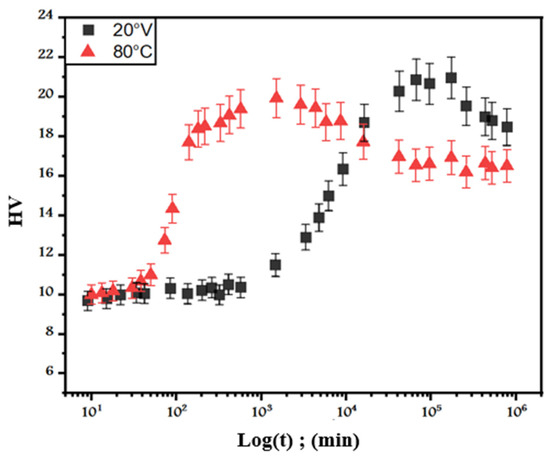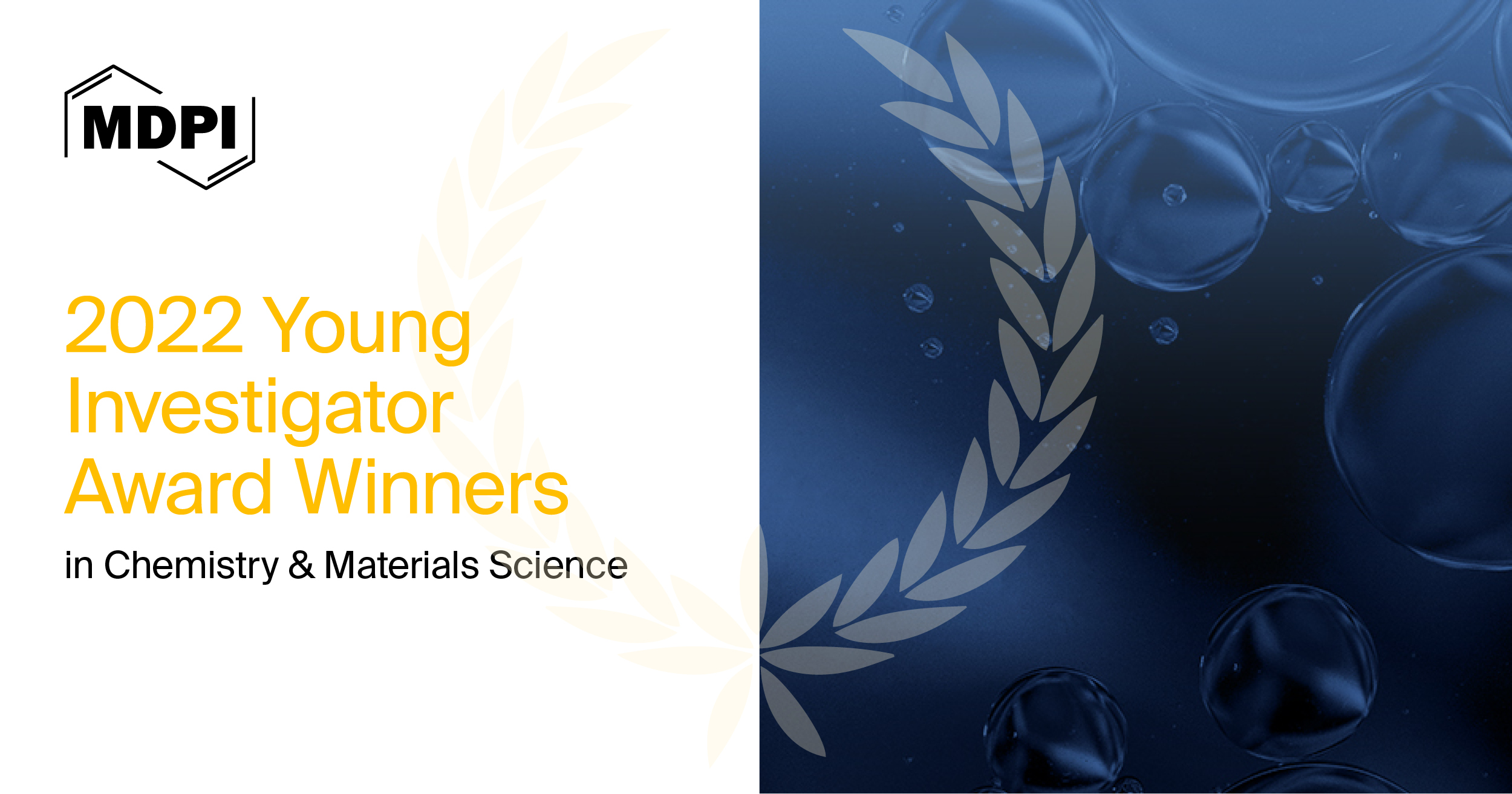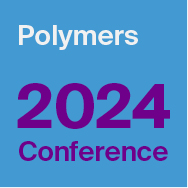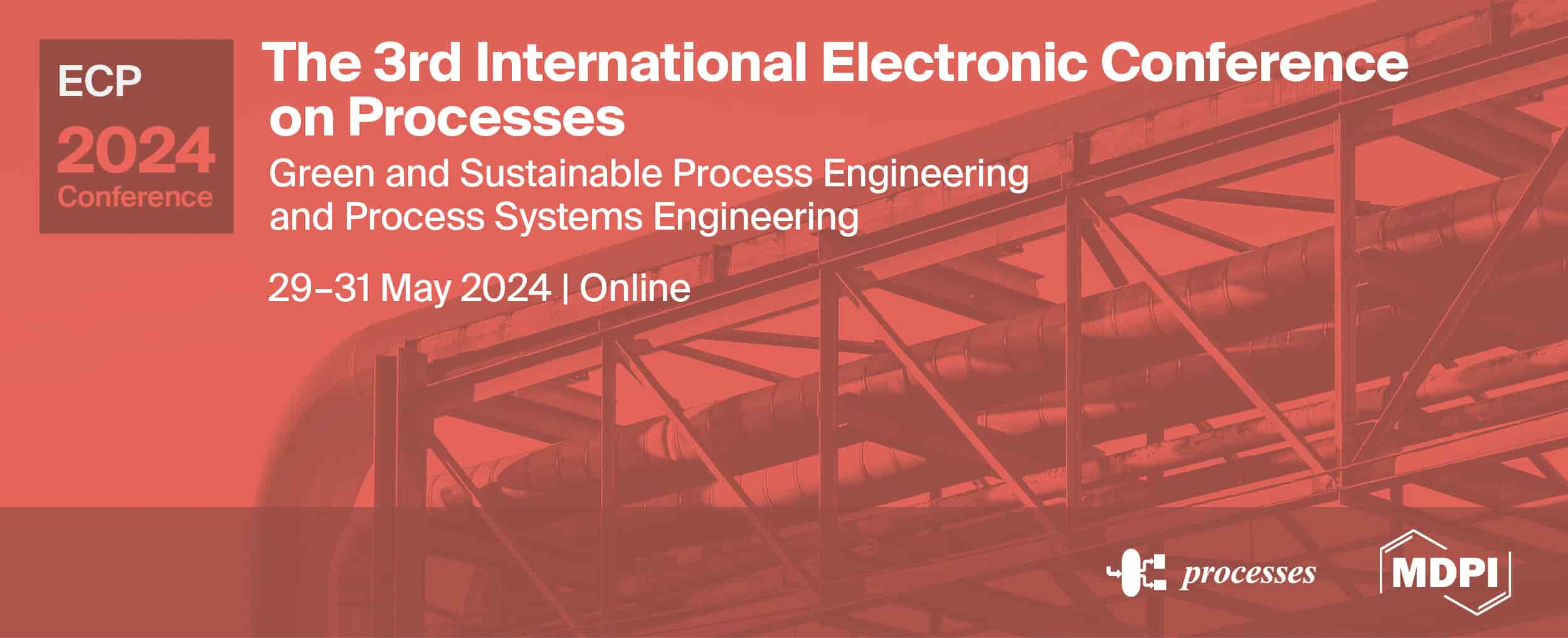-
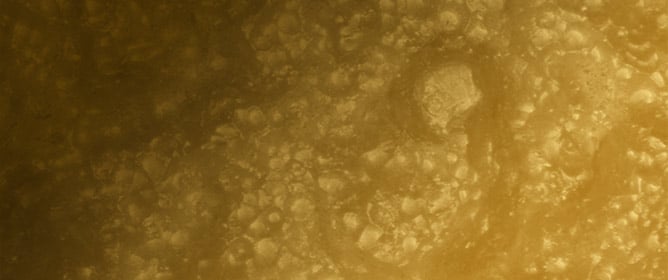 Sol–Gel Silica Coatings for Corrosion Protection of Aluminum Parts Manufactured by Selective Laser Melting (SLM) Technology
Sol–Gel Silica Coatings for Corrosion Protection of Aluminum Parts Manufactured by Selective Laser Melting (SLM) Technology -
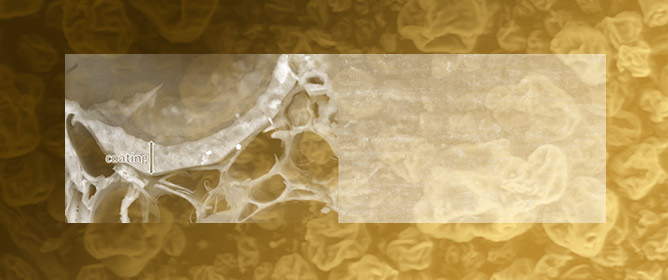 Comparative Analysis of the Advantages and Disadvantages of Utilizing Spirulina-Derived Pigment as a Bio-Based Colorant for Wood Impregnator
Comparative Analysis of the Advantages and Disadvantages of Utilizing Spirulina-Derived Pigment as a Bio-Based Colorant for Wood Impregnator -
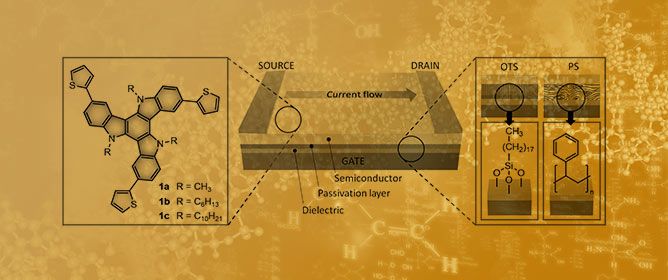 Role of the Alkylation Patterning in the Performance of OTFTs: The Case of Thiophene-Functionalized Triindoles
Role of the Alkylation Patterning in the Performance of OTFTs: The Case of Thiophene-Functionalized Triindoles
Journal Description
Coatings
Coatings
is a peer-reviewed journal of coatings and surface engineering published monthly online by MDPI. The Korean Tribology Society (KTS) is affiliated with Coatings and its members receive discounts on the article processing charges.
- Open Access— free for readers, with article processing charges (APC) paid by authors or their institutions.
- High Visibility: indexed within Scopus, SCIE (Web of Science), Inspec, CAPlus / SciFinder, and other databases.
- Journal Rank: JCR - Q2 (Materials Science, Coatings & Films) / CiteScore - Q2 (Surfaces and Interfaces)
- Rapid Publication: manuscripts are peer-reviewed and a first decision is provided to authors approximately 12.4 days after submission; acceptance to publication is undertaken in 2.8 days (median values for papers published in this journal in the first half of 2023).
- Recognition of Reviewers: reviewers who provide timely, thorough peer-review reports receive vouchers entitling them to a discount on the APC of their next publication in any MDPI journal, in appreciation of the work done.
- Sections: published in 15 topical sections.
- Testimonials: See what our editors and authors say about Coatings.
Impact Factor:
3.4 (2022);
5-Year Impact Factor:
3.4 (2022)
Latest Articles
Kinetic Study of the Aging and Overaging of Alloy Pb0.058%Ca0.12%Sr1.09%Sn for Battery Grids
Coatings 2023, 13(9), 1534; https://doi.org/10.3390/coatings13091534 (registering DOI) - 01 Sep 2023
Abstract
In this paper, we examine the effect of a small amount of Sn, Sr and Ca on the hardening and the kinetic properties of Pb. Experimentally, we analyze the specific process from the structural hardening evolution to equilibrium of PbCaSrSn alloy occurring in
[...] Read more.
In this paper, we examine the effect of a small amount of Sn, Sr and Ca on the hardening and the kinetic properties of Pb. Experimentally, we analyze the specific process from the structural hardening evolution to equilibrium of PbCaSrSn alloy occurring in two steps. In the first one, a discontinuous transformation hardening and a continuous precipitation take place. A lamellar discontinuous precipitation that occurs after aging, characterizes the second step. Theoretically, we study the aging and overaging kinetics of the alloy by using the two complimentary methods needed to calculate the apparent activation energies of the Pb0.058%Ca0.12%Sr1.09%Sn associated with the various transformations, characterizing its hardening at 20 and 80 °C. We show that activation energies of aging and overaging of Pb0.058%Ca0.12%Sr1.09%Sn alloy are 25 and 28 kJ/mole, respectively, which are four times lower than the self-diffusion energy of Pb. Moreover, the addition of Ca, Sr and Sn leads to an amplification of the maximum hardness from 5 ± 5% HV to 21 ± 5% HV and an acceleration of the transformation hardening process responsible for aging.
Full article
(This article belongs to the Special Issue Advances and Applications of Nanomaterials Thin Films and Coatings)
►
Show Figures
Open AccessReview
Corrosion and Protection of Magnesium Alloys: Recent Advances and Future Perspectives
by
and
Coatings 2023, 13(9), 1533; https://doi.org/10.3390/coatings13091533 (registering DOI) - 01 Sep 2023
Abstract
Magnesium alloys are of significant importance for lightweight manufacturing and weight-saving applications due to their high weight-to-strength ratio and good mechanical properties. However, the poor corrosion resistance of Mg alloys limits their large-scale practical application. An essential theoretical foundation for the development of
[...] Read more.
Magnesium alloys are of significant importance for lightweight manufacturing and weight-saving applications due to their high weight-to-strength ratio and good mechanical properties. However, the poor corrosion resistance of Mg alloys limits their large-scale practical application. An essential theoretical foundation for the development of corrosion-resistant magnesium alloys and their surface protection technologies can be elucidated via the investigation of the corrosion mechanism of the magnesium surface and the alteration of the corrosion rate after surface conversion and coating. This paper discusses some typical corrosion behaviors by originally describing the corrosion mechanism of magnesium alloys with and without different coatings and surface treatments. In order to predict the future theoretical investigation and research directions for the surface protection of magnesium alloys, some techniques and preventative measures to enhance the corrosion resistance of magnesium alloys are reviewed, and these protection techniques are intercompared for better understanding.
Full article
(This article belongs to the Special Issue Surface Function Enhancement of Energy Storage Materials)
►▼
Show Figures

Figure 1
Open AccessArticle
Effect of Y2O3 Content on Microstructure and Corrosion Properties of Laser Cladding Ni-Based/WC Composite Coated on 316L Substrate
Coatings 2023, 13(9), 1532; https://doi.org/10.3390/coatings13091532 (registering DOI) - 01 Sep 2023
Abstract
To improve the corrosion resistance of 316L substrate and lengthen its useful life in marine environments, Ni-based/WC/Y2O3 cladding layers with different Y2O3 contents were fabricated on 316L stainless steel using laser cladding technology. The influence of Y
[...] Read more.
To improve the corrosion resistance of 316L substrate and lengthen its useful life in marine environments, Ni-based/WC/Y2O3 cladding layers with different Y2O3 contents were fabricated on 316L stainless steel using laser cladding technology. The influence of Y2O3 additives on the microstructure and properties of the cladding coatings was investigated by using scanning electron microscopy, energy dispersive spectroscopy, X-ray diffraction, a microhardness tester, an electrochemical workstation and a tribometer. Results show that the metallurgical bonding is well formed between the coating and the 316L substrate. The coating consisted primarily of γ-Ni phase and carbides. Adding an appropriate amount of Y2O3 can effectively refine the microstructure and inhibit the precipitation of the carbide hard phase; in addition, the added rare earth element can promote the solid-solution-strengthening effect of the cladding coatings, thus improving the microhardness and wear resistance of the cladding coatings and their electrochemical corrosion property in 3.5 wt% NaCl solution. The hardness of the Ni-based/WC coatings was substantially higher than that of the substrate, and it was greatest at a Y2O3 content of 1%. The corrosion and wear resistance of Y2O3-modified Ni-based/WC composite coatings are significantly better than those of the composite coating without Y2O3.
Full article
(This article belongs to the Special Issue Recent Development in Post-processing for Additive Manufacturing)
►▼
Show Figures
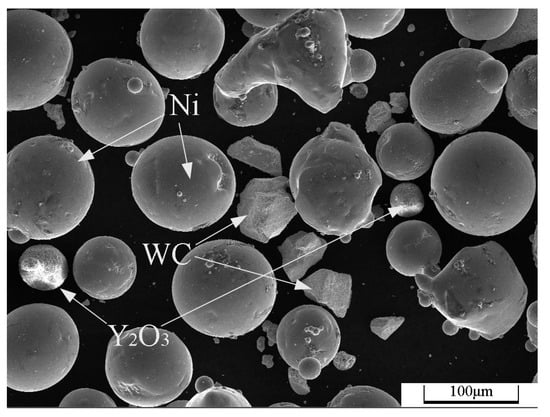
Figure 1
Open AccessArticle
Induction Heating Characteristics of Electroless Ni-Coated CFRP for Deicing and Anti-Icing
Coatings 2023, 13(9), 1531; https://doi.org/10.3390/coatings13091531 (registering DOI) - 31 Aug 2023
Abstract
►▼
Show Figures
Ice accumulation on the surface of aircraft is a serious threat to flight safety and a fatal factor causing air accidents. However, traditional aircraft deicing methods no longer meet the requirements of safe flight due to changes in aircraft structural materials. In recent
[...] Read more.
Ice accumulation on the surface of aircraft is a serious threat to flight safety and a fatal factor causing air accidents. However, traditional aircraft deicing methods no longer meet the requirements of safe flight due to changes in aircraft structural materials. In recent years, the application of carbon fiber-reinforced polymer (CFRP) materials in the aviation structure industry has increased. In this study, we demonstrate an economical, easy-to-prepare, and pollution-free approach to deice an aircraft through induction heating. The nickel-coated carbon fiber-reinforced polymer used as the induction heater for aircraft deicing is obtained by electroless nickel plating on the surface of the CFRP. The result shows that it takes just 110 s to achieve a temperature of 205 °C on the nickel-plated CFRP when the input voltage is 30 V, as well as melting the ice layer with a thickness of 30 mm, while the temperature of this material can reach up to 81 °C by electric heating when the input voltage is 1.5 V. Meanwhile, the nickel-plated CFRP exhibits good repeatability during the induction heating. Based on the excellent electrothermal properties, the nickel-plated CFRP polymer shows a prominent deicing ability, which provides a promising strategy for the deicing of aircraft.
Full article
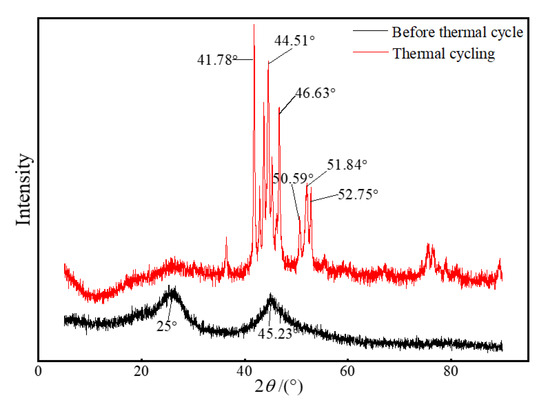
Figure 1
Open AccessArticle
Superhydrophobic and Thermally Conductive Coating for Restraining Corona Loss and Audible Noise of High-Voltage Transmission Lines
Coatings 2023, 13(9), 1530; https://doi.org/10.3390/coatings13091530 - 31 Aug 2023
Abstract
In recent years, the number of high-voltage transmission lines has sharply increased with the rapid development of modern industry. However, a corona discharge phenomenon often occurs on the exposed high-voltage transmission lines, leading to energy loss and noise pollution. Herein, we have proposed
[...] Read more.
In recent years, the number of high-voltage transmission lines has sharply increased with the rapid development of modern industry. However, a corona discharge phenomenon often occurs on the exposed high-voltage transmission lines, leading to energy loss and noise pollution. Herein, we have proposed a facile spraying method to prepare a superhydrophobic and thermally conductive coating to restrain the corona discharge phenomenon of high-voltage transmission lines, with vinyl silicone oil and hydrogen silicone oil as the main materials and modified boron nitride (BN) as a thermal conductive filler. The obtained composite coating exhibited superhydrophobicity, with a high water contact angle of 162°. In addition, the coating also showed a good self-cleaning capability, non-adhesion capability, mechanical stability, and chemical stability. Owing to the construction of the thermally conductive pathways with BN, the thermal conductivity of the coating reached 1.05 W/m·K, which was beneficial to quickly dissipating the heat generated by the current heating effect. Moreover, the corona losses of the positive and negative electrodes under simulated rainy conditions were decreased by 7.43% and 8.05%, respectively. The findings of our work have provided a new strategy to effectively restrain the corona discharge phenomenon of transmission lines, showing great application potential in the field of high-voltage power networks.
Full article
(This article belongs to the Special Issue Recent Advances in Superhydrophobic and Icephobic Surfaces)
►▼
Show Figures
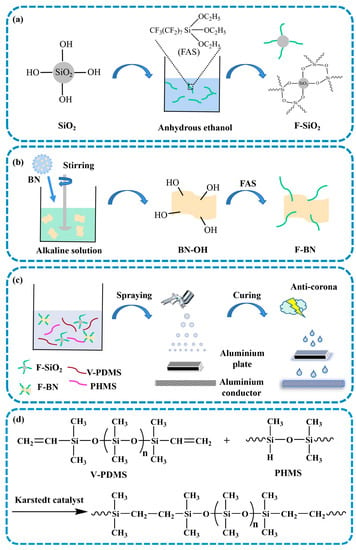
Figure 1
Open AccessArticle
Mechanical and Barrier Properties Optimization of Carboxymethyl Chitosan-Gelatin-Based Edible Film Using Response Surface Methodology
Coatings 2023, 13(9), 1529; https://doi.org/10.3390/coatings13091529 - 31 Aug 2023
Abstract
Edible coatings have attracted the attention of researchers in recent years due to their degradability, safety, non-toxicity, low cost, good preservation effect, and other advantages. To prepare a new edible film with good mechanical and barrier properties, carboxymethyl chitosan (CMCS) and gelatin (GL)
[...] Read more.
Edible coatings have attracted the attention of researchers in recent years due to their degradability, safety, non-toxicity, low cost, good preservation effect, and other advantages. To prepare a new edible film with good mechanical and barrier properties, carboxymethyl chitosan (CMCS) and gelatin (GL) were selected as the film-forming matrix in this experiment, and glycerol, CaCl2, Tween-20, and ascorbic acid (AA) have been added as plasticizers, crosslinking agents, surfactants, and antioxidants. Crosslinking agents and antioxidants first, the film was prepared by the casting method, and single factor tests were used to compare the effects of different CMCS: GL (w:w), glycerol, CaCl2, Tween-20, and AA on mechanical properties (Tensile Strength (TS), Elongation at break (EAB)) and barrier properties (Water Vapor Permeability (WVP), Oxygen Permeability (OP)). Then, the weighting of each performance index is determined by a combination of principal component analysis and the comprehensive membership evaluation method. The formula for calculating the overall rating of edible film performance was determined. Finally, the manufacturing process of edible film with better performance was optimized by a response surface test. The results showed that the influence of each factor on the performance of the edible film was as follows: Glycerol addition > CaCl2 addition > CMCS:GL, Tween-20, and AA had no significant influence on the performance of the edible film. When calculating the overall edible film property score, the weights of TS, EAB, WVP, and OP were 0.251, 0.068, 0.334, and 0.347, respectively. The optimal formulation for an edible film based on CMCS-GL with better properties than pure CMCS and GL film was CMCS:GL = 2:1, with the addition of 1% glycerol, 2% CaCl2, 0.1% Tween-20, and 2% AA. The TS, EAB, OP, and WVP of the film obtained with this formula were: 16.28 MPa, 71.46%, 1.39 × 10−12 g·cm/(cm2·s·Pa), 5.10 × 10−11 cm3·cm/(m2·s·Pa), respectively. This study suggests that CMCS-GL-based edible coatings can be used as a new food packaging material.
Full article
(This article belongs to the Special Issue Advances in Biodegradable Packaging, Bioedible Films, and Coatings for Food)
►▼
Show Figures
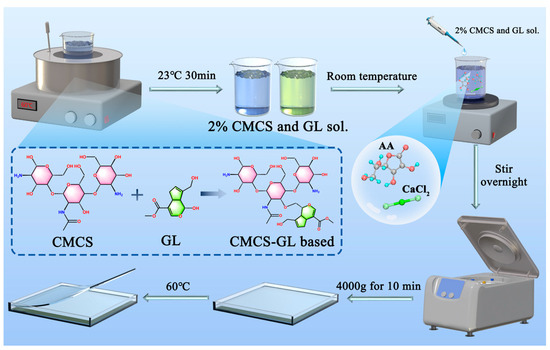
Figure 1
Open AccessArticle
Enhancing the Performance and Stability of Perovskite Solar Cells via Morpholinium Tetrafluoroborate Additive Engineering: Insights and Implications
Coatings 2023, 13(9), 1528; https://doi.org/10.3390/coatings13091528 - 31 Aug 2023
Abstract
Perovskite solar cells (PSCs), since their inception in 2009, have experienced a meteoric rise in power conversion efficiencies (PCEs), challenging established photovoltaic technologies. However, their commercial deployment is hindered by stability and performance issues related to the presence of defects at the perovskite
[...] Read more.
Perovskite solar cells (PSCs), since their inception in 2009, have experienced a meteoric rise in power conversion efficiencies (PCEs), challenging established photovoltaic technologies. However, their commercial deployment is hindered by stability and performance issues related to the presence of defects at the perovskite surface and grain boundaries. This study focused on the exploration of Morpholinium tetrafluoroborate (MOT) as a post-treatment additive to mitigate these challenges. Comprehensive characterization techniques revealed that the synergistic action of Morpholine and BF4− ions in MOT substantially improved the quality of the perovskite films and passivates surface and bulk defects, yielding notable enhancements in device PCE and stability. MOT-doped PSCs exhibited a PCE of 23.83% and retain 92% of the initial PCE after 2000 h of continuous illumination under one sun condition. The findings underscore the significance of additive engineering in advancing perovskite solar cell technology, opening up prospects for high-performing and durable perovskite photovoltaic devices.
Full article
(This article belongs to the Special Issue Recent Advances in the Development of Thin Films)
►▼
Show Figures
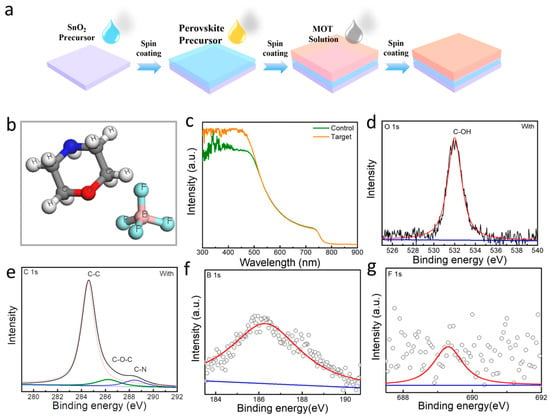
Figure 1
Open AccessArticle
Effect of High-Temperature Thermal Shock on Solar Absorption Rate of Alumina Coating
Coatings 2023, 13(9), 1527; https://doi.org/10.3390/coatings13091527 - 31 Aug 2023
Abstract
►▼
Show Figures
With the development of the aerospace industry, the close exploration of the Sun has become a human demand. However, close-range exploration means that the detection satellite needs to accept the test of high temperatures above 1400 °C, so a thermal protective coating is
[...] Read more.
With the development of the aerospace industry, the close exploration of the Sun has become a human demand. However, close-range exploration means that the detection satellite needs to accept the test of high temperatures above 1400 °C, so a thermal protective coating is a necessary part of the detection satellite to isolate heat and reflected light. Al2O3 coating has the characteristics of high emissivity and low absorptivity, and it is the best choice for thermal protection coating. However, the coating is subjected to thermal cycles, including heating and cooling, as the satellite rotates around the Sun, which could result in a change in the structure and properties of the coating. Therefore, thermal shock experiments were carried out, and the influence of microstructure on the absorption rate of the Al2O3 coating was investigated. In this study, an Al2O3 coating was prepared by atmospheric plasma spraying (APS). The coating was subjected to a thermal shock (TS) test at 1400 °C using a self-made flame shock device, and coating samples under different thermal shock degrees were obtained. A scanning electron microscope (SEM) was used to characterize the coating pores, and the effects of the coating pore size, aspect ratio (A/R) and cracks in the coating on the optical properties of the coating under different thermal shock degrees were analyzed. In order to clarify the influence of coating microstructure changes on the optical properties of the coating under different thermal shock degrees, not only relevant experiments were carried out, but also the solar reflectivity of Al2O3 coatings with different pore structures was analyzed by the finite element method using finite-difference time-domain (FDTD). The results show that increasing the porosity and aspect ratio of the pores can improve the partial solar absorption of the coating. It was also found that the transverse crack propagation improves the solar reflectance of the coating.
Full article

Figure 1
Open AccessArticle
Performance and Properties of a Ti-Al Composite Anodic Oxide Film on AC-Etched Al Foil
Coatings 2023, 13(9), 1526; https://doi.org/10.3390/coatings13091526 - 30 Aug 2023
Abstract
AC-etched aluminum foils for an Al electrolytic capacitor were covered with a TiO2 film by a sol–gel coating and then anodized to 25 V in an ammonium adipate solution. The structure, properties, and performance of the anodic oxide films were examined by
[...] Read more.
AC-etched aluminum foils for an Al electrolytic capacitor were covered with a TiO2 film by a sol–gel coating and then anodized to 25 V in an ammonium adipate solution. The structure, properties, and performance of the anodic oxide films were examined by transmission electron microscopy (TEM), scanning electron microscopy (SEM), electrochemical impedance measurements (EIS), a general digital LCR meter, a TV characteristic tester, and multicycle pulse charging–discharging. It was found that the anodizing of aluminum coated with TiO2 films led to the formation of Al-Ti composite anodic oxide films, which consist of an outer Al-Ti composite oxide layer and an inner Al2O3 layer on the metal substrate. The capacitance (C25V) of the anodic oxide films formed on specimens with a TiO2 coating was about 10% larger than without a TiO2 coating. The specific resistance (Rox) of the Al-Ti composite film measured by EIS was lower than the blank one, accounting for a greater increase in the rise time (Tr) and a slight reduction in the withstand voltage (Vt). After hydration and a multicycle pulse charging–discharging destructive test, the Al-Ti composite anodic oxide film maintained the same good, comprehensive dielectric properties and performance as the blank one, thereby proving to be promising for acting as dielectric layers.
Full article
(This article belongs to the Special Issue Dielectric Materials for Energy Storage, Energy Harvesting and Electrocaloric Applications)
►▼
Show Figures
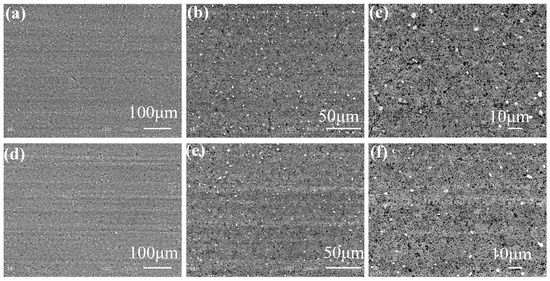
Figure 1
Open AccessReview
Research Status of Aluminum Base Coating on Titanium Alloy
Coatings 2023, 13(9), 1525; https://doi.org/10.3390/coatings13091525 - 30 Aug 2023
Abstract
At present, in the aviation industry, titanium alloy is mainly used to manufacture parts such as compressor discs, blades, and the casings of aircraft engines. When titanium alloys are in service, high temperature is generated due to high-speed running friction, which requires them
[...] Read more.
At present, in the aviation industry, titanium alloy is mainly used to manufacture parts such as compressor discs, blades, and the casings of aircraft engines. When titanium alloys are in service, high temperature is generated due to high-speed running friction, which requires them to have high-temperature oxidation resistance and friction resistance. If they are used in an environment with salt corrosion, titanium alloys will face thermal corrosion, which limits their wider practical applications. At present, there are many methods to protect titanium alloys. This paper mainly includes alumina-based coatings and some preparation methods. The characteristics and functional mechanisms of three functional coatings for the service environment, namely highly temperature-resistant alumina-based coating, thermal corrosion-resistant alumina-based coating, and wear-resistant alumina-based coating, are summarized. Finally, the development direction of composite coatings of titanium and titanium alloys for a complex service environment is suggested.
Full article
(This article belongs to the Section Corrosion, Wear and Erosion)
►▼
Show Figures
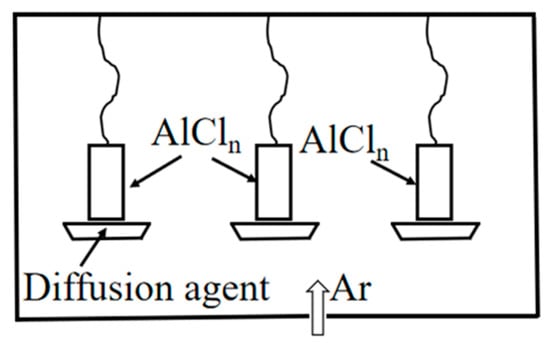
Figure 1
Open AccessArticle
Effect of Laser Shock Peening on the Fatigue Life of 1Cr12Ni3Mo2VN Steel for Steam Turbine Blades
by
, , , , , , , , and
Coatings 2023, 13(9), 1524; https://doi.org/10.3390/coatings13091524 - 30 Aug 2023
Abstract
►▼
Show Figures
In the present study, laser shock peening (LSP) was employed to enhance the rotating bending fatigue life of 1Cr12Ni3Mo2VN martensitic stainless steel used in steam turbine blades, addressing the issue of insufficient fatigue performance in these components. The aim of this study was
[...] Read more.
In the present study, laser shock peening (LSP) was employed to enhance the rotating bending fatigue life of 1Cr12Ni3Mo2VN martensitic stainless steel used in steam turbine blades, addressing the issue of insufficient fatigue performance in these components. The aim of this study was to investigate the effect of LSP on the microhardness, residual stress, and rotating bending fatigue life of 1Cr12Ni3Mo2VN steel samples. The microhardness of LSP-treated samples was increased by 10.5% (LSP-3J sample) and 15.3% (LSP-4J sample), respectively, compared to high-frequency hardening samples. The residual compressive stress of the LSP-4J sample was the largest, reaching −689 MPa, and the affected layer depth was about 800 μm. Fatigue tests showed that the number of cycles at the fracture point for the LSP-3J and LSP-4J samples increased by 163% and 233%, respectively. The fatigue fracture morphology of the four samples showed that the microhardness and residual compressive stress distribution introduced by LSP could effectively inhibit the initiation of surface cracks, slow down the crack growth rate, and improve the rotating bending fatigue life of 1Cr12Ni3Mo2VN.
Full article

Figure 1
Open AccessArticle
Magneto-Plasmonic Nanoparticles Generated by Laser Ablation of Layered Fe/Au and Fe/Au/Fe Composite Films for SERS Application
by
, , , , , , , , , and
Coatings 2023, 13(9), 1523; https://doi.org/10.3390/coatings13091523 - 30 Aug 2023
Abstract
Magneto-plasmonic nanoparticles were fabricated using a 1064 nm picosecond-pulsed laser for ablation of Fe/Au and Fe/Au/Fe composite thin films in acetone. Nanoparticles were characterized by electron microscopy, ultraviolet-visible (UV-VIS) absorption, and Raman spectroscopy. Hybrid nanoparticles were arranged on an aluminum substrate by a
[...] Read more.
Magneto-plasmonic nanoparticles were fabricated using a 1064 nm picosecond-pulsed laser for ablation of Fe/Au and Fe/Au/Fe composite thin films in acetone. Nanoparticles were characterized by electron microscopy, ultraviolet-visible (UV-VIS) absorption, and Raman spectroscopy. Hybrid nanoparticles were arranged on an aluminum substrate by a magnetic field for application in surface-enhanced Raman spectroscopy (SERS). Transmission electron microscopy and energy dispersive spectroscopy analysis revealed the spherical core-shell (Au-Fe) structure of nanoparticles. Raman spectroscopy of bare magneto-plasmonic nanoparticles confirmed the presence of magnetite (Fe3O4) without any impurities from maghemite or hematite. In addition, resonantly enhanced carbon-based bands were detected in Raman spectra. Plasmonic properties of hybrid nanoparticles were probed by SERS using the adsorbed biomolecule adenine. Based on analysis of experimental spectra and density functional theory modeling, the difference in SERS spectra of adsorbed adenine on laser-ablated Au and magneto-plasmonic nanoparticles was explained by the binding of adenine to the Fe3O4 structure at hybrid nanoparticles. The hybrid nanoparticles are free from organic stabilizers, and because of the biocompatibility of the magnetic shell and SERS activity of the plasmonic gold core, they can be widely applied in the construction of biosensors and biomedicine applications.
Full article
(This article belongs to the Special Issue Fabrication of Plasmonic Thin Films, Their Characterization and Applications)
►▼
Show Figures
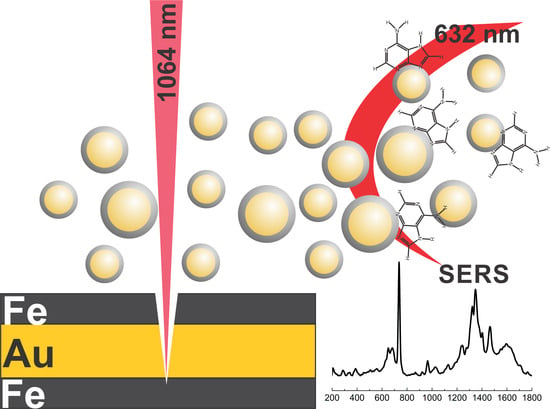
Graphical abstract
Open AccessArticle
Dependence of Electrical Charge Transport on the Voltage Applied across Metal–Graphene–Metal Stack under Fixed Compressing Force
Coatings 2023, 13(9), 1522; https://doi.org/10.3390/coatings13091522 - 30 Aug 2023
Abstract
While charge transport in the horizontal plane of graphene has been widely studied, there is only limited understanding about the transport across a stack of films that include graphene sheets. In this report, a model of a metal–graphene–metal stack was produced and investigated
[...] Read more.
While charge transport in the horizontal plane of graphene has been widely studied, there is only limited understanding about the transport across a stack of films that include graphene sheets. In this report, a model of a metal–graphene–metal stack was produced and investigated via detailed analysis of experimental dependences of electrical current on applied external voltage. Scanning probe microscopy (SPM) was used to measure the dependences of the local tunneling current on the voltage under fixed compressing force. The SPM platinum probe produced the compressing force on gold-supported graphene in the metal–graphene–metal system. The experimental results were explained by a model that included the pinning of the Fermi level of graphene to platinum and the related changes in the parameters of the potential barrier for the electron flow. It was demonstrated that low-voltage and high-voltage intervals can be identified in the charge transport across the metal–graphene–metal stack. In the high-voltage interval (approximately > |±0.7| V in the tested stack), the history of the current measurement was detected due to the charge accumulation. In the low-voltage interval, the current was determined by the electronic states near the Fermi level. In this interval, the graphene layer can function as a blocking gate for the electron transport in the metal–graphene–metal system.
Full article
(This article belongs to the Special Issue Dielectric and Pyroelectric Films for Electronic Device Applications)
►▼
Show Figures
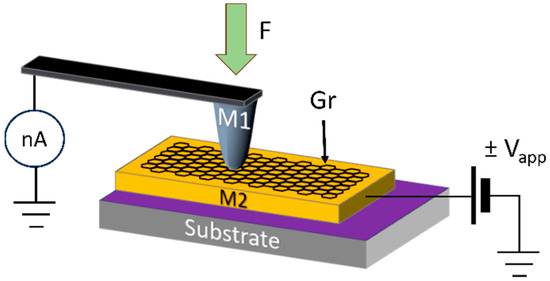
Figure 1
Open AccessArticle
Application of Starch Based Coatings as a Sustainable Solution to Preserve and Decipher the Charred Documents
Coatings 2023, 13(9), 1521; https://doi.org/10.3390/coatings13091521 - 30 Aug 2023
Abstract
Fire can be one of the most destructive elements to cause devastation. Fire can completely or partly destroy any crucial and invaluable documents, such as banknotes, books, affidavits, etc., in a couple of minutes. Moreover, the documents can also be damaged by heat,
[...] Read more.
Fire can be one of the most destructive elements to cause devastation. Fire can completely or partly destroy any crucial and invaluable documents, such as banknotes, books, affidavits, etc., in a couple of minutes. Moreover, the documents can also be damaged by heat, smoke, soot, and water during an accident. The burnt documents become fragile, losing their identity, which may have some evidentiary value related to the incident. Therefore, there is a strong need for processing to procure, preserve, and decipher, i.e., to restore the texts written on them. Hence, the present research focuses on developing a new method using natural polysaccharides, i.e., starch, to preserve and decipher the contents of charred documents. The most suitable concentration of starch analog was found to be 6% microwaved at 80 °C for about 10 min. As soon as the charred documents were coated with 6% starch analog, the majority of the invisible texts became visible to the naked eye in a second. Moreover, the application of a synthesized analog of polysaccharide on fragile charred documents provided an appreciable increase in strength by almost 0.1 kg/cm2 for the coated charred documents of each paper type compared to that of non-coated ones and made them stabilized. This research also involves the use of easy and advanced handwriting recognition techniques (HCR) using an easily accessible, free platform, G-lens, that successfully recognized the majority of texts deciphered using 6% starch analog and converted them from captured images to a readable and copyable text format. Furthermore, the document visualization under VSC also gave a promising result by enhancing and deciphering the non-visible and less visible texts under flood light and white spot light at 715 and 695 long passes. Hence, this study offers an environmentally friendly, cost-effective, and sustainable approach of using a natural polysaccharide instead of synthetic polymers for the preservation and decipherment of charred documents.
Full article
(This article belongs to the Special Issue Advanced Coating Material for Heritage Preservation)
►▼
Show Figures
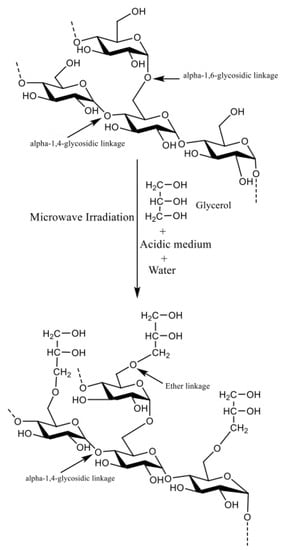
Figure 1
Open AccessArticle
Thickness and Humidity on Proton Conductivity in MOF-508 Thin Film by Twin-Zinc-Source Method
Coatings 2023, 13(9), 1520; https://doi.org/10.3390/coatings13091520 - 30 Aug 2023
Abstract
►▼
Show Figures
To achieve structurally stable and high proton conductive materials, preferably under ambient humidity and pressure, the well-controlled thickness and conductivity of the MOF thin films represent an effective approach. Electrodes are the most important part of fuel cells; proton conducting materials are often
[...] Read more.
To achieve structurally stable and high proton conductive materials, preferably under ambient humidity and pressure, the well-controlled thickness and conductivity of the MOF thin films represent an effective approach. Electrodes are the most important part of fuel cells; proton conducting materials are often used for electrodes, but today high proton conducting materials are expensive and use harsh conditions. Therefore, the goal of researchers is the pursuit of stable structure high proton conductive materials. We prepared well controlled thickness and conductive MOF-508a thin films on a Zn substrate by the “twin zinc source” method, which is very rare in conventional proton conductive materials. The results show that when the thickness of the MOF-508a/Zn thin film was at its minimum (16 µm), the resistivity and proton conductivity reached 2.5 × 103 Ω cm and 4 × 10−4 S cm−1, respectively. The MOF-508b/Zn thin film can absorb water molecules in a high humidity atmosphere and the conductivity decreases significantly with increasing humidity. When the film was put into the atmosphere with a relative humidity of 85%, the resistivity reached 200 Ω cm significantly. This work provides a simple, low cost, and environmentally friendly strategy for fabricating high proton conducting MOF films by exploring the “twin-zinc-source” method, which is critically important for PEMFC. It is believed that higher conductivity MOF films can be obtained with further modifications, indicating the potential of such films as humidity detectors.
Full article
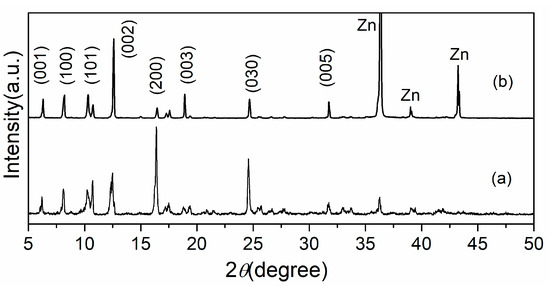
Figure 1
Open AccessArticle
Preparation and Properties of Textured Ni–W Coatings Electrodeposited on the Steel Surface from a Pyrophosphate Bath
by
, , , , , , , , , , and
Coatings 2023, 13(9), 1519; https://doi.org/10.3390/coatings13091519 - 29 Aug 2023
Abstract
Ni–W alloys with a (2 2 0) or (1 1 1) preferred orientation growth and amorphous structure were prepared from a pyrophosphate bath using the electrodeposition method. Structure transformation can be the result of the bath temperature (Tb) and the concentration
[...] Read more.
Ni–W alloys with a (2 2 0) or (1 1 1) preferred orientation growth and amorphous structure were prepared from a pyrophosphate bath using the electrodeposition method. Structure transformation can be the result of the bath temperature (Tb) and the concentration of sodium tungstate (CW) in the bath. Increasing the Tb and CW can change the crystal growth from (2 2 0) to (1 1 1). At a higher Tb and CW, an amorphous Ni–W alloy can be obtained. The tungsten content in the coatings should be responsible for the structure change. The three textured Ni–W alloys with a (2 2 0) texture, (1 1 1) texture and amorphous structure were annealed at different temperatures ranging from 200 to 700 °C. The microhardness, corrosion resistance and HER of the as-deposited and annealed Ni–W alloys were comparatively studied. The results show that the microhardness of the amorphous Ni–W alloy is the highest and reaches 1028 HV after annealing at 400 °C. The (2 2 0)-textured Ni–W alloy has the best corrosion resistance, which is further improved after annealing, while the HER activity of the (1 1 1) textured Ni-W alloy is superior.
Full article
(This article belongs to the Special Issue Corrosion Science and Surface Engineering II)
►▼
Show Figures
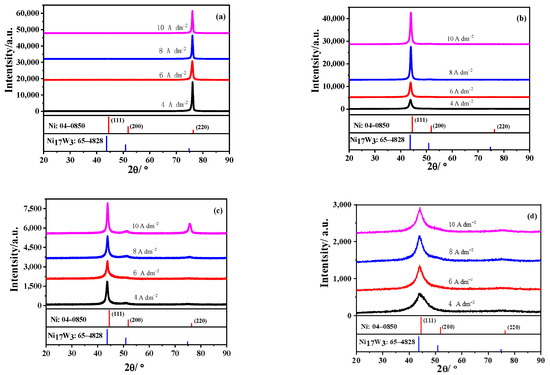
Figure 1
Open AccessArticle
Comparative Analysis of Performance of Water-Based Coatings Prepared by Two Kinds of Anti-Bacterial Microcapsules and Nano-Silver Solution on the Surface of Andoung Wood
Coatings 2023, 13(9), 1518; https://doi.org/10.3390/coatings13091518 - 29 Aug 2023
Abstract
►▼
Show Figures
A nano-silver solution, urea-formaldehyde resin-coated nano-silver solution microcapsules (AgNPS@UF), and melamine-formaldehyde resin-coated chitosan-modified nano-silver solution microcapsules (CS-AgNPS@MF) were added into the coatings at different contents for comparative tests to explore an anti-bacterial agent with the best anti-bacterial properties in the water-based coatings on
[...] Read more.
A nano-silver solution, urea-formaldehyde resin-coated nano-silver solution microcapsules (AgNPS@UF), and melamine-formaldehyde resin-coated chitosan-modified nano-silver solution microcapsules (CS-AgNPS@MF) were added into the coatings at different contents for comparative tests to explore an anti-bacterial agent with the best anti-bacterial properties in the water-based coatings on Andoung wood (Monopetalanthus spp.). As the content of anti-bacterial agents increased, AgNPS@UF had the best anti-bacterial property towards Staphylococcus aureus and Escherichia coli, with anti-bacterial rates of 79.0% and 82.1%, respectively. The optical and mechanical properties of the coating quickly worsened as the content of anti-bacterial agents increased. The anti-bacterial coatings with AgNPS@UF have the minimum chromatic aberration change of 6.5. The anti-bacterial coating with 5% content of AgNPS@UF decreased the aging rate. This coating had good optical properties, and its liquid-resistant level is 2. When the 5% content of AgNPS@UF was added, after high-temperature accelerated aging and ultraviolet (UV) aging, the anti-bacterial rates of the coating with AgNPS@UF decreased toward Escherichia coli from 82.1% to 62.2% and decreased toward Staphylococcus aureus from 79.3% to 61.1%, respectively. This shows that the coating had a long-lasting anti-bacterial property. The anti-bacterial property of the coating after high-temperature accelerated aging was superior to that after the UV aging. The incorporation of AgNPS@UF in water-based coatings protects people from the risks of Escherichia coli and Staphylococcus aureus more effectively with long-lasting property. The research results provide a reference for the preparation of anti-bacterial water-based coatings on the surface of the Andoung wood.
Full article
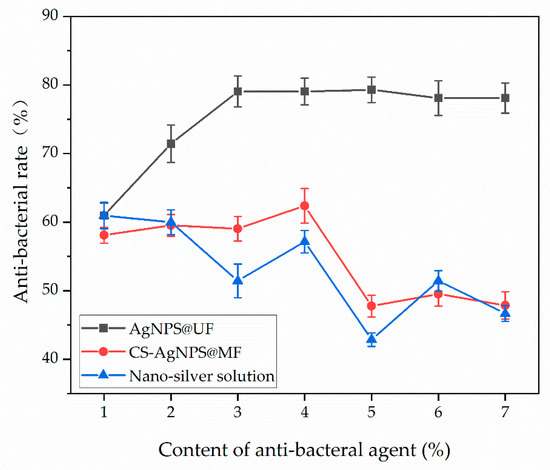
Figure 1
Open AccessFeature PaperArticle
Effect of Magnesium Hydroxide and Aluminum Hydroxide as Thermal Barriers on the Flame-Retardant Behavior of Acrylic-Based Coating
Coatings 2023, 13(9), 1517; https://doi.org/10.3390/coatings13091517 - 28 Aug 2023
Abstract
In the effort to improve fire safety in residential, industrial, or naval structures, the study of flame-retardant coatings has become increasingly interesting. Flame-retardant additives are definitely the most traveled route; however, often these additives are halogenated compounds that increase the amount of smoke
[...] Read more.
In the effort to improve fire safety in residential, industrial, or naval structures, the study of flame-retardant coatings has become increasingly interesting. Flame-retardant additives are definitely the most traveled route; however, often these additives are halogenated compounds that increase the amount of smoke and toxic decomposition of the products during polymer combustion. It is necessary to develop new fire retardant (FR) agents that respect the environment and are safe for human health. This work aims to study two completely harmless hydroxides, Mg(OH)2 and Al(OH)3, added in low percentages (2 wt.%) to an already marketed acrylic polymer emulsion (79.2 wt.% of solid content, 37.3 wt.% and 41.8 wt.%, respectively, for polymer and fillers contents) in order to decrease the dangerous effects of these additives on the physical integrity and durability of the coatings. The hydroxides content was added in 6.2 wt.% and 5.6 wt.%, respectively, to polymer and total solids present in the emulsion. Flame exposure tests are conducted at different times (15 s and 30 s) to verify the flame stability and thermal insulation exerted by the investigated coatings. Furthermore, through a precise analysis of the areas damaged by the combustion process, it is possible to link the flame-retardant properties to the FR choice and its particle size, finding a promising solution in the sample based on small Mg(OH)2 particles for fire protection in naval applications.
Full article
(This article belongs to the Special Issue Smart Coatings)
►▼
Show Figures
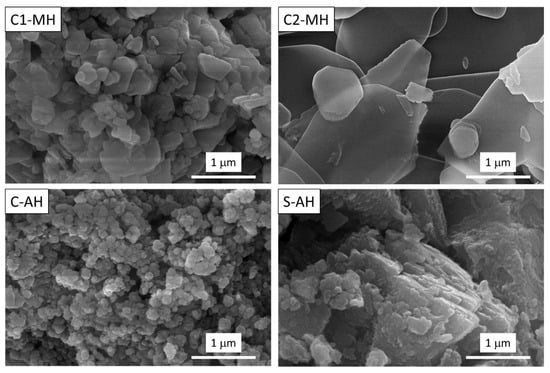
Figure 1
Open AccessArticle
A Study on the High-Temperature Molten Salt Corrosion Resistance of Hot-Dip Aluminum/Carburizing Composite Coating on Ti65 Titanium Alloy
by
and
Coatings 2023, 13(9), 1516; https://doi.org/10.3390/coatings13091516 - 28 Aug 2023
Abstract
This article presents a new method for preparing a coating on Ti65 titanium alloy using a two-step procedure comprising hot-dipped aluminum and solid carburization. The effects of the carburization on the hot-dipped aluminum coating against the presence of a NaCl deposit at 810
[...] Read more.
This article presents a new method for preparing a coating on Ti65 titanium alloy using a two-step procedure comprising hot-dipped aluminum and solid carburization. The effects of the carburization on the hot-dipped aluminum coating against the presence of a NaCl deposit at 810 °C were systematically studied. In this article, the microstructure, morphology, phase composition of the coating, and corrosion products were investigated using SEM (Scanning Electron Microscopy), EDS (Energy Dispersive Spectrometer), and X-ray diffraction. The results indicated that the corrosion resistance of the hot-dip aluminum/carburizing composite coating was not significantly enhanced with the hot-dip aluminum coating. This can be attributed to the formation of TiC and Ti3AlC after carburization, which promoted the formation of loose and unprotected TiO2 in the coating during molten salt corrosion. In addition, the oxidation of the carbon atom into CO2 led to a high concentration of pores in the coating, creating channels for NaCl to penetrate the coating and accelerate the corrosion rate.
Full article
(This article belongs to the Section Ceramic Coatings and Engineering Technology)
►▼
Show Figures
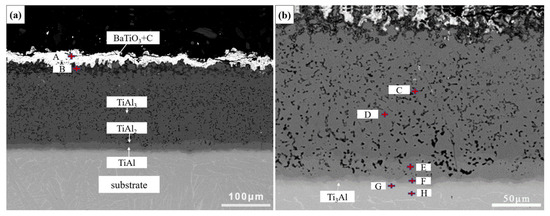
Figure 1
Open AccessCommunication
Effects of Commercial Natural Compounds on Postharvest Decay of Strawberry Fruit
Coatings 2023, 13(9), 1515; https://doi.org/10.3390/coatings13091515 - 28 Aug 2023
Abstract
Gray mold and Rhizopus rot, which is caused by Botrytis cinerea and Rhizopus stolonifer, respectively, are the most destructive forms of postharvest decay of the strawberry fruit. In this work, we tested the effectiveness of the control on the postharvest decay of
[...] Read more.
Gray mold and Rhizopus rot, which is caused by Botrytis cinerea and Rhizopus stolonifer, respectively, are the most destructive forms of postharvest decay of the strawberry fruit. In this work, we tested the effectiveness of the control on the postharvest decay of the strawberry fruit (Fragaria × ananassa Duch cv. ‘Monterey’) following postharvest applications of six commercial natural compounds: chitosan-based coating compound (1% of ‘ChitP’, ‘ChitS’, ‘ChitK’, ‘ChitO’), commercial essential oil (EOs) products based on grapefruit seed extract (0.5% of ‘GraFr’), sweet orange (0.5% of ‘SwOr’), a product that included eugenol, geraniol, and thymol EO, (0.4% of ‘EuGeTh’), an organic compound as humic acid (0.5% w/v of ‘HuAc’), and, lastly, methyl jasmonate plant growth regulator (1% v/v ‘MeJA’). Strawberries were dipped in solution for 30 s and incubated at room temperature (20 ± 0.5 °C) or at cold storage conditions (4 ± 0.5 °C) following 4 days of shelf life at 20 °C. The treatments with ‘ChitP’, ‘ChitS’, and ‘ChitO’ provided ~30%–40% reduction of gray mold in cold storage conditions, while the ‘MeJA’, ‘SwOr’, and ‘GraFr’ with high activities of volatile substances were more effective at controlling gray mold at room temperature. ‘HuAc’, ‘ChitK’, and ‘ChitO’ were more effective at controlling Rhizopus rot in both cold storage (~50%) and room temperature conditions.
Full article
(This article belongs to the Special Issue Chitosan and Other Edible Coatings with Antimicrobial Activity: Synthesis, Properties and Horticultural Applications)
►▼
Show Figures

Figure 1

Journal Menu
► ▼ Journal Menu-
- Coatings Home
- Aims & Scope
- Editorial Board
- Reviewer Board
- Topical Advisory Panel
- Instructions for Authors
- Special Issues
- Topics
- Sections & Collections
- Article Processing Charge
- Indexing & Archiving
- Editor’s Choice Articles
- Most Cited & Viewed
- Journal Statistics
- Journal History
- Journal Awards
- Society Collaborations
- Conferences
- Editorial Office
Journal Browser
► ▼ Journal BrowserHighly Accessed Articles
Latest Books
E-Mail Alert
News
Topics
Topic in
Applied Sciences, Coatings, JMMP, Materials, Metals
Welding and Joining of Materials in Off-Shore and Energy Industry
Topic Editors: Dariusz Fydrych, Jacek Tomków, Aleksandra Świerczyńska, Grzegorz Rogalski, Sergey G. Parshin, Chandan Pandey, Michał Landowski, Hamed Aghajani Derazkola, Thomas HasselDeadline: 15 September 2023
Topic in
Applied Sciences, Coatings, CMD, Materials, Metals
Environmental Sensitivity and Safety Assessment of Materials
Topic Editors: Jian Chen, Daokui Xu, Fanjiang Meng, Jamie NoëlDeadline: 30 September 2023
Topic in
Coatings, Electronics, Energies, Sensors, Telecom
Condition Monitoring and Diagnostic Methods for Power Equipment in New Energy Power Systems
Topic Editors: Shuaibing Li, Guoqiang Gao, Guochang Li, Yi Cui, Jiefeng Liu, Guangya Zhu, Jin LiDeadline: 15 October 2023
Topic in
Applied Sciences, Coatings, Materials, Metals, Nanomaterials
Cutting-Edge Research Trends in (Non)Metallic Materials: Design, Testing and Application
Topic Editors: Petrica Vizureanu, Andrei Victor Sandu, Madalina Simona Baltatu, Dumitru Doru Burduhos NergisDeadline: 31 October 2023

Conferences
28 May 2023–2 June 2033
The 243rd ECS Meeting and 18th International Symposium on Solid Oxide Fuel Cells (SOFC-XVIII)

Special Issues
Special Issue in
Coatings
Functional Nanoparticles for Environmental Contaminants Removal and Agricultural Application
Guest Editor: Yu ShenDeadline: 1 September 2023
Special Issue in
Coatings
Semiconductor Thin Films
Guest Editor: Nam-Hoon KimDeadline: 23 September 2023
Special Issue in
Coatings
Functional Coatings for Textile Applications
Guest Editor: Andrea ZilleDeadline: 30 September 2023
Special Issue in
Coatings
Thermal Plasma Processing for Coating: Structural, Functional Properties of Thick Films
Guest Editors: Sneha Samal, Filip PrůšaDeadline: 20 October 2023
Topical Collections
Topical Collection in
Coatings
Feature Paper Collection in Plasma Coatings, Surfaces & Interfaces
Collection Editors: Qi Hua Fan, Bocong Zheng
Topical Collection in
Coatings
Surface and Interface Science and Engineering for the Society of the Future
Collection Editor: Alessandro Lavacchi
Topical Collection in
Coatings
Feature Paper Collection in 'Surface Coatings for Biomedicine and Bioengineering'
Collection Editor: Anton Ficai
Topical Collection in
Coatings
Feature Paper Collection (5) of Topic Editors
Collection Editor: Petrica Vizureanu



